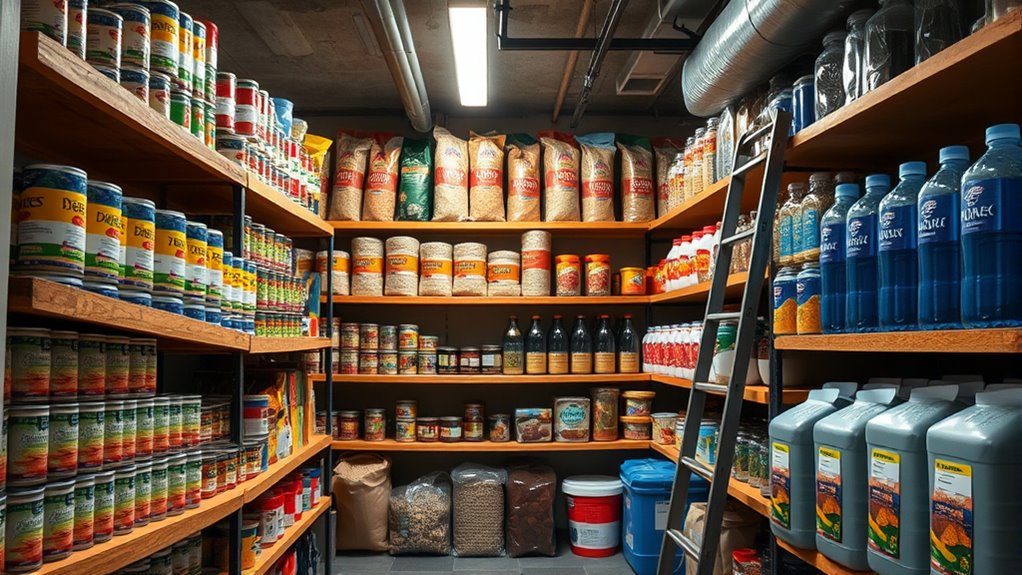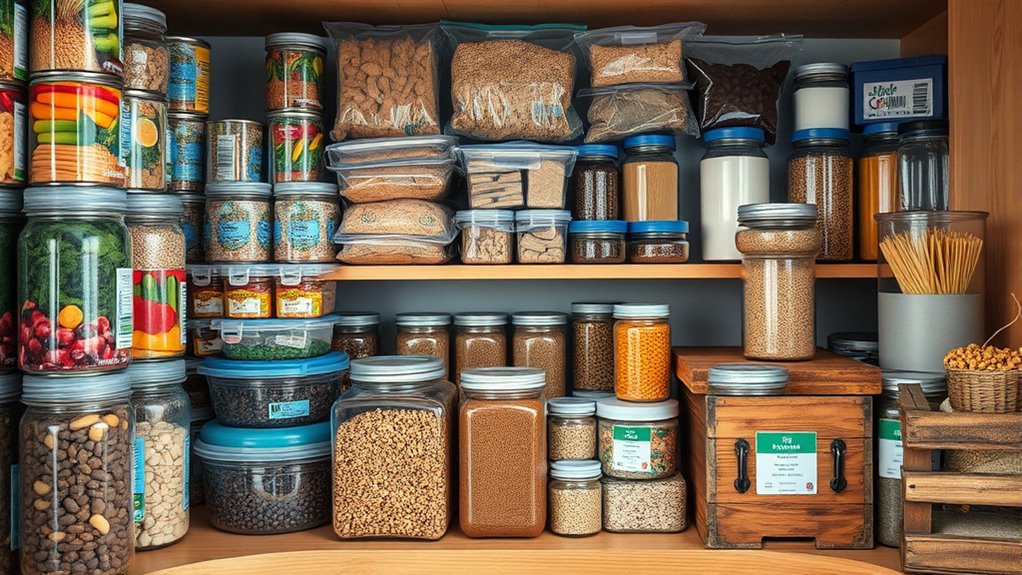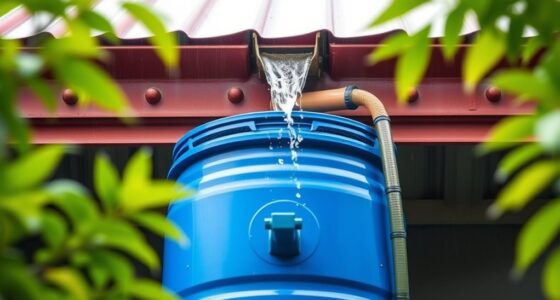To build a long-term food supply, focus on storing essentials like water, non-perishable foods, and emergency supplies. Use food-grade containers for storage, and rotate your stock regularly to keep supplies fresh. Properly label and organize your storage area to guarantee easy access and maintenance. Keep up-to-date with best practices and regulations to prevent spoilage and contamination. Continue exploring ways to enhance your setup, so you’re fully prepared for any emergency situation.
Key Takeaways
- Prioritize non-perishable, nutrient-dense foods with long shelf lives like grains, canned goods, and dried beans for reliable storage.
- Store food in airtight, food-grade containers in a cool, dark, and dry environment to extend freshness and prevent spoilage.
- Regularly rotate stock by consuming and replacing supplies to maintain freshness and prevent expiration.
- Keep detailed inventory and organize supplies for easy access and efficient management.
- Incorporate water storage and purification methods alongside food stockpiling for comprehensive emergency preparedness.

Have you ever wondered what essentials you should stockpile to be prepared for emergencies? When building a long-term food supply, focusing on the basics is key, and two critical aspects often overlooked are emergency hydration and nutritional planning. Without enough water, even the most abundant food supplies can become useless, so ensuring you have a reliable source of emergency hydration is your top priority. Water should be stored in sturdy, food-grade containers, and you’ll want to have at least one gallon per person per day, enough to cover drinking, cooking, and hygiene needs. Don’t forget to rotate your water supply regularly to keep it fresh, and consider investing in water purification options like filters or tablets for added security if your stored water runs low or becomes contaminated. Additionally, understanding permits and inspections can help ensure your storage solutions comply with local regulations and stay effective over time. Incorporating appropriate storage techniques can further prolong the shelf life of your water and food supplies, ensuring their usability in emergencies. Proper storage methods can also help prevent spoilage and contamination, safeguarding your supplies in the long run. Regularly monitoring your supplies and adjusting your storage practices based on emerging best practices can enhance the safety and longevity of your emergency stockpile. Proper installation and regular maintenance of storage units can also prevent hazards and maintain the integrity of your supplies.
Frequently Asked Questions
How Long Can Stored Food Typically Last Before Expiring?
Stored food usually lasts from a few months to several years, depending on expiration dates and storage conditions. You should always check expiration dates on packaging and store food in cool, dry, airtight containers to prolong shelf life. Proper storage helps prevent spoilage and maintains freshness. Keep an eye on labels, and rotate your supplies regularly to ensure your food stays safe and edible for as long as possible.
What Are the Most Space-Efficient Foods for Long-Term Storage?
Looking for space-saving snacks? You’ll love vacuum sealing and dehydration techniques for long-term storage. These methods shrink food’s size, saving space while keeping it safe. Opt for lightweight, low-moisture items like dried fruits, jerky, and powdered grains. They’re durable, nutrient-dense, and easy to pack. By using vacuum sealing and dehydration, you maximize storage, minimize mess, and maintain freshness—making your long-term food supply both compact and convenient.
How Often Should I Rotate My Stockpile to Ensure Freshness?
You should rotate your stockpile every 6 to 12 months to keep your food fresh. Check expiration dates regularly and follow a consistent rotation schedule, placing newer items behind older ones. This way, you use the oldest supplies first, preventing spoilage. Staying proactive with your rotation helps maintain a reliable food supply and ensures everything remains safe and nutritious when you need it.
Are There Any Foods That Are Unsafe to Store Long-Term?
You should avoid storing perishable foods long-term, as they spoil quickly and can pose health risks. Be mindful of allergen risks, especially with products like nuts or dairy that may cause reactions if stored improperly or past their expiration. Instead, focus on non-perishable options like canned goods, dried grains, and freeze-dried foods. Regularly check your supplies to discard expired items and keep your stockpile safe and effective.
What Types of Containers Are Best for Preserving Food Quality?
Your food’s freshness depends on the right containers, and trust me, choosing the best ones can be a game-changer. Airtight containers are your best friends—they keep air and moisture out, preventing spoilage. Vacuum sealing takes preservation to the next level by removing air completely. Both options help extend shelf life and maintain quality, ensuring your food stays safe and delicious for the long haul.
Conclusion
By stockpiling essentials now, you’re not just preparing—you’re building an unstoppable fortress against any disaster! Imagine never worrying about running out of food, no matter how wild the chaos gets around you. With a solid supply, you’ll be the hero of your own story, surviving anything that comes your way. Don’t wait for disaster to strike—start building your long-term food supply today and turn yourself into an unbeatable survival legend!










